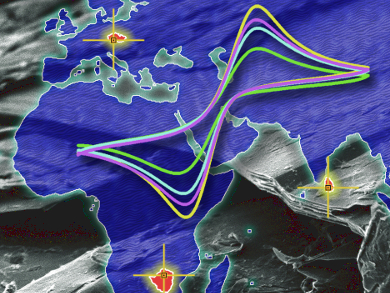Since its discovery, graphene has garnered much interest due to its extraordinary mechanical, physical, and chemical properties. Potential applications of graphene include electrochemical sensing, nanocomposites, electronics, energy generation and storage, and healthcare. Production of graphene in sufficient quantities for commercial and industrial applications is of particular interest.
The synthesis of bulk graphene has mainly centered on top-down approaches, such as the oxidation of graphite to graphite oxide (GO), followed by reduction by thermal, chemical, electrochemical, or microwave methods. This general route yields reduced graphene oxides (RGOs), which exhibit properties approaching those of pristine graphene but with additional functional groups covalently bound to the carbon layers.
Martin Pumera, Nanyang Technological University, Singapore, and colleagues have found that the geological source of natural graphites influences their fundamental properties. The team examined four different natural graphites from mines in the Czech Republic, Sri Lanka, and Zimbabwe. The samples were exposed to a modified Hummers oxidation method and the resulting GOs were found to have similar defect densities but exhibited significant differences in the extent of oxidation and types of oxygen groups, which directly influenced their electrochemical properties.
These differences were propagated further in the subsequent chemical reduction of the GOs, with the RGOs exhibiting significantly different reduction efficiencies and electrical conductivities. For example, the most oxidized GO, from the Czech Republic, gave an average ΔEp value (peak-to-peak separation of a voltammogram) of 557 mV; the least oxidized GO, from Zimbabwe, had a corresponding value of 703 mV. The team assign these differences in reactivity and electrochemistry to the different geological processes and environments at the points of origin.
- Geographical and Geological Origin of Natural Graphite Heavily Influence the Electrical and Electrochemical Properties of Chemically Modified Graphenes,
Colin Hong An Wong, Zdeněk Sofer, Martin Pumera,
Chem. Eur. J. 2015.
DOI: 10.1002/chem.201500116




